#takekurabe
Explore tagged Tumblr posts
Text
Higuchi’s Unrevealed Ability
my theory on what it could be…

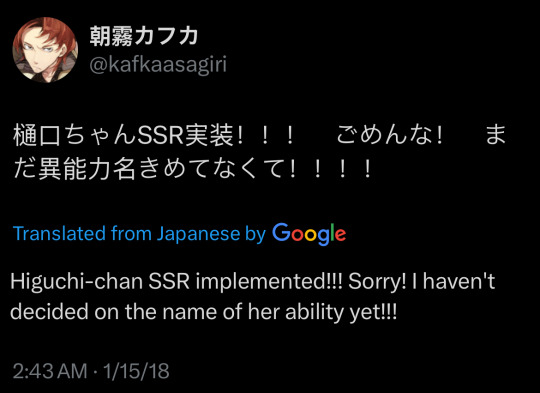
i think that Higuchi’s ability will be called “Takekurabe” (Growing Up/Child’s Play) after her most famous work, and i believe it might have something to do with reincarnation. here’s why…
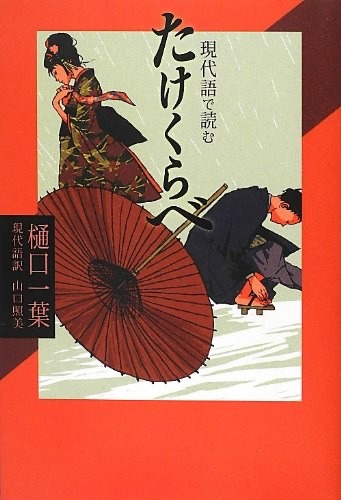
in this official art she is featured with red spider lilies, which are symbolic of death, but are also thought of as a bridge between heaven & earth…a reminder of the “cyclical nature of life & death”

Takekurabe also explores themes such as how life is fleeting. & also abt being forced into a role that you didn’t want, or wouldn’t have chosen for yourself
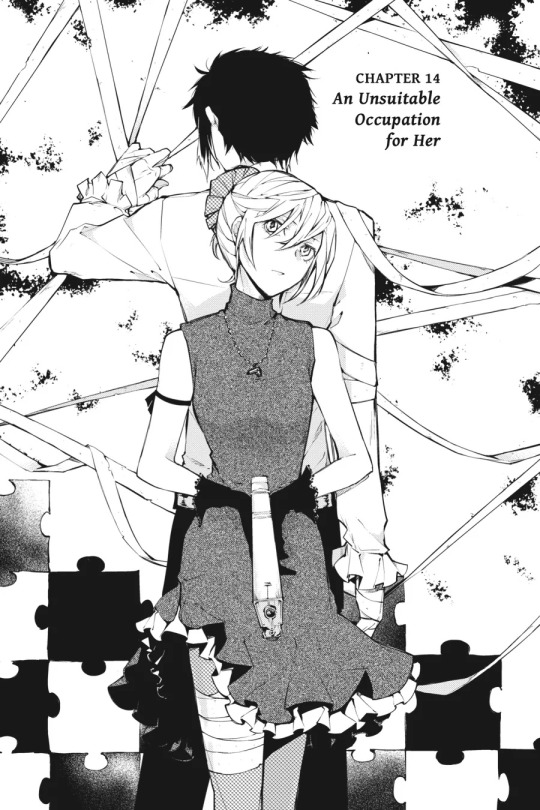
(plus potential foreshadowing: in this official art, Higuchi is surrounded by pinwheels— which symbolize childhood, but also the cycle of life, & the buddhist teaching of reincarnation)
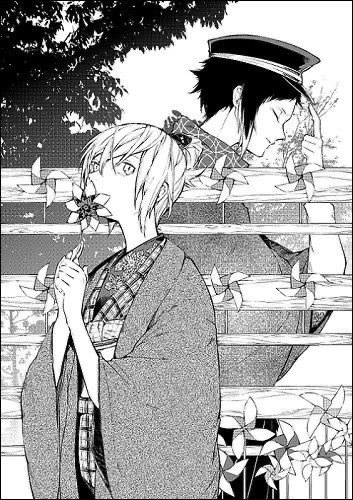
back to reincarnation…
after being told that Akutagawa may never wake up, she reached out to him & a glow appeared around her hand— like she was activating an ability— before pulling away bc she remembered that he didn’t want her (or anyone’s) help
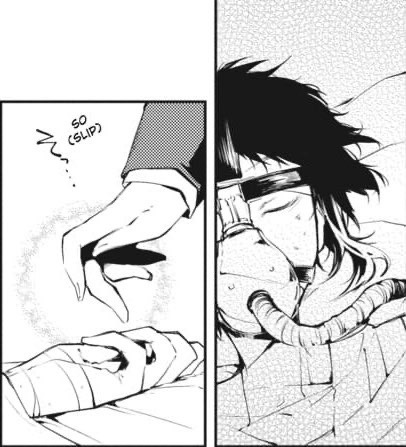
but this means that she’s able to give help in this sort of situation
additionally, the fact that she almost always appears in official arts w Akutagawa indicates that she will probably use her ability on him at some point, which makes sense considering his terminal condition
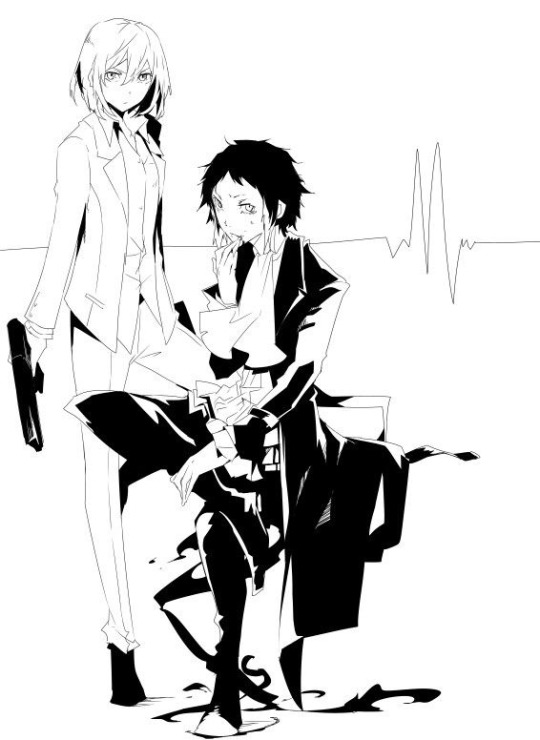
(note the pulse in the background, his bright eyes, & her white suit)
because we have yet to see her use her ability, i’m assuming that she can only use it once, so she’d be giving up her life for Akutagawa’s (a life for a life— his reincarnation)
this would imitate irl Higuchi’s unfortunately short life— with her having died at only 25 years old. it also makes sense to give her such a powerful ability since irl Higuchi is such an important figure in japanese history— japan’s first professional woman writer of modern literature
now for a less likely, but fun theory…
i wonder if Higuchi’s sister has anything to do with her ability (in bsd she’s unnamed, but her irl sister’s name was Kuniko so that’s what we’ll call her)
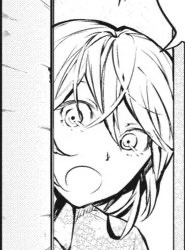
according to Higuchi’s bungo episode, despite her literary genius, irl Higuchi was practically useless without her sister
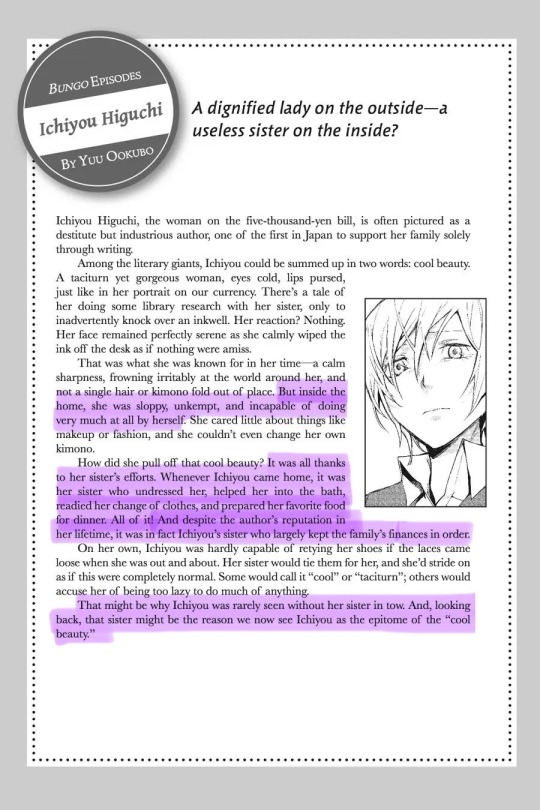
Kuniko was the one who made what Higuchi did possible & kept things functional behind the scenes
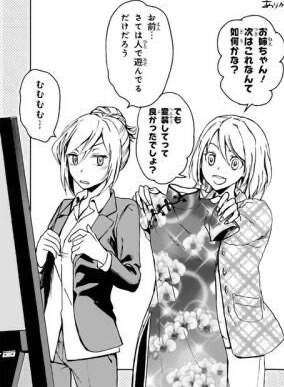
so i think it’d be super interesting (& a cool irl reference) if Kuniko was involved in some way with Higuchi’s ability (i also just want to see more of her bc this sister duo is so cute :’))
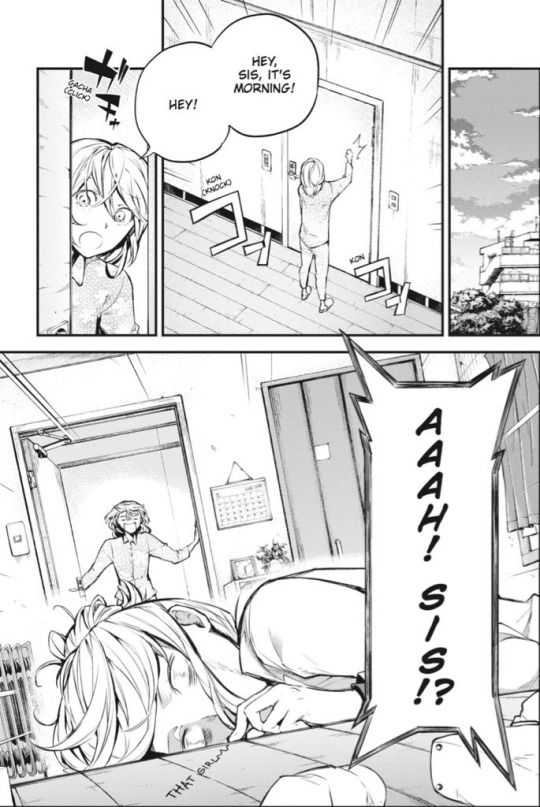
bonus: when i watched this anime adaptation of Takekurabe, this was the ending scene & i wonder if it was harukawa’s inspiration for this official art 🥹
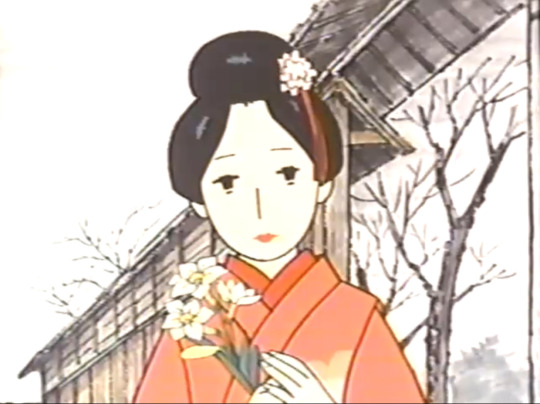

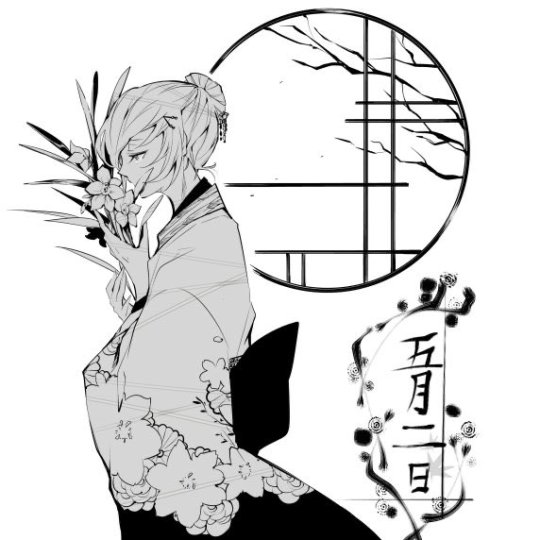
white lilies represent purity, & since they were off by the side of the road, they might have represented the character’s fleeting purity. white lilies are also used at funerals to represent a soul’s return to purity & its journey to the afterlife… which circles back to the reincarnation theme 👀
#i can’t wait for asgr to explore Higuchi’s character more. i know he’ll do her justice (even if it’s painful 💔)#ps i found that anime to be a really good adaptation of her book! it captured the nostalgic & melancholic tones well#tho ofc nothing can replace reading the book itself… Higuchi-sensei was such a talented writer#if you’re interested i definitely recommend reading AND watching :’)#rambling about bsd again#bsd#bungou stray dogs#bsd higuchi#higuchi ichiyo#takekurabe#bsd literature#bsd analysis#bsd meta
533 notes
·
View notes
Text
Tanbi to Heroine - Literary classics adapted into shoujo manga
I want to talk about the book of my dreams: Mangaka! Sekai Bungaku - Tanbi to Heroine (マンガ化! 世界文学 耽美とヒロイン). It's a compilation of shoujo manga from the 1970s and 1980s which are adaptations of classics from world literature. Each manga has a little introduction about its artist, and the work it was adapted from. Thank you, our Tosho no Ie overlords.
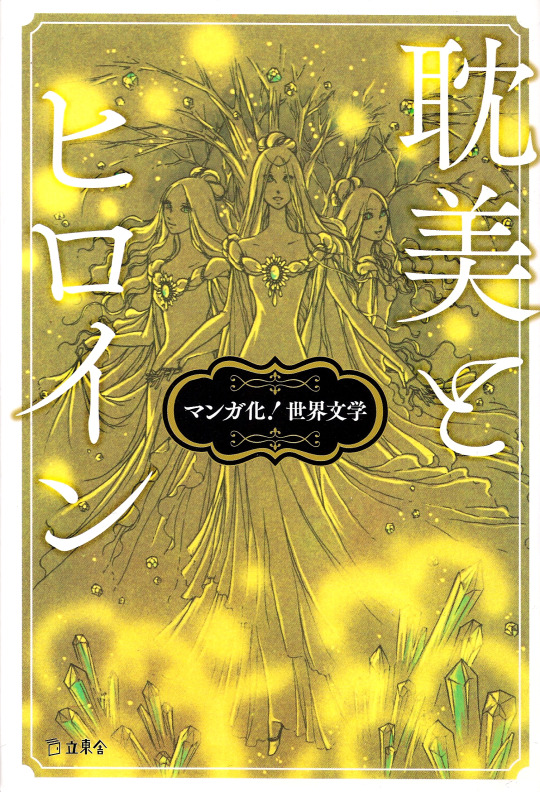
It came out in 2022, and I'm so happy to own this book. After watching Aoi Bungaku and falling in love with what they did with Kokoro there, I've always wanted to see more anime/manga adaptations of literature. Seeing how authors/directors give the works their own interpretations while still staying faithful to the original work, and not trying to do a 1:1 adaptation can be great, as long as they don't jump the shark. Speaking of which, I even liked Gankutsuou despite the bizarre 3D space mecha fights because Edmond Dantès was still there. I can't get mad at it when the director gets the core of the work right.
Anyway, I want to present this awesome book and the manga collected in this volume!
Hagio Moto – Shiroi Tori ni Natta Shoujo (白い鳥になった少女)
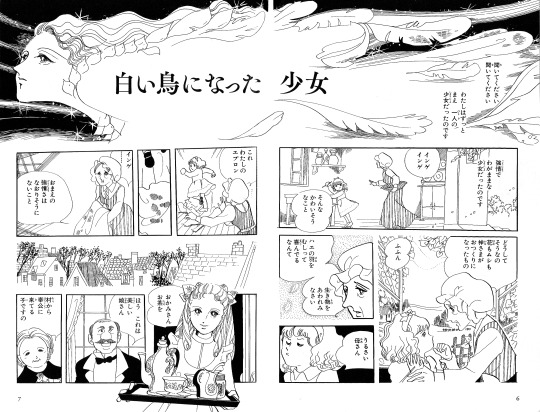
Adapted from Andersen's The Girl Who Trod on A Loaf, and first published in Bessatsu Shoujo Comic 1972/12.
Hagio tells the story from the point of view of the girl who becomes a bird at the end of the tale, which is a very nice touch.
2. Mizuno Hideko – Cendrillon (サンドリヨン)
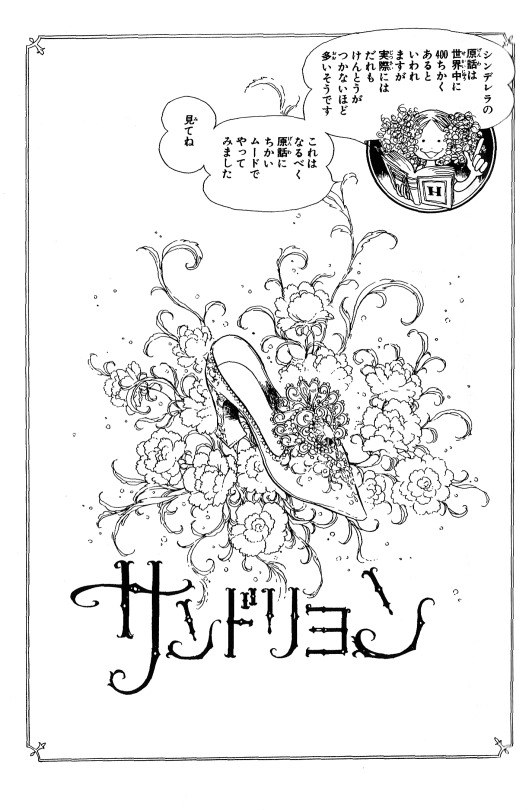
Adapted from Grimm Brothers' Cinderella, and first published in LaLa 1977/9 & 11.
With Mizuno's exquisite art, this Cinderella adaptation is the perfect fairy tale. On the first and last pages Hideko-tan breaks the fourth wall to give us information about the original work, and going "bruh, these are supposed to be tales for kids but some brutal stuff goes on in them. What's with all the mutilations and eye-gouging?!" It's adorable!
3. Maki Miyako – Hanakagerou (花陽炎)
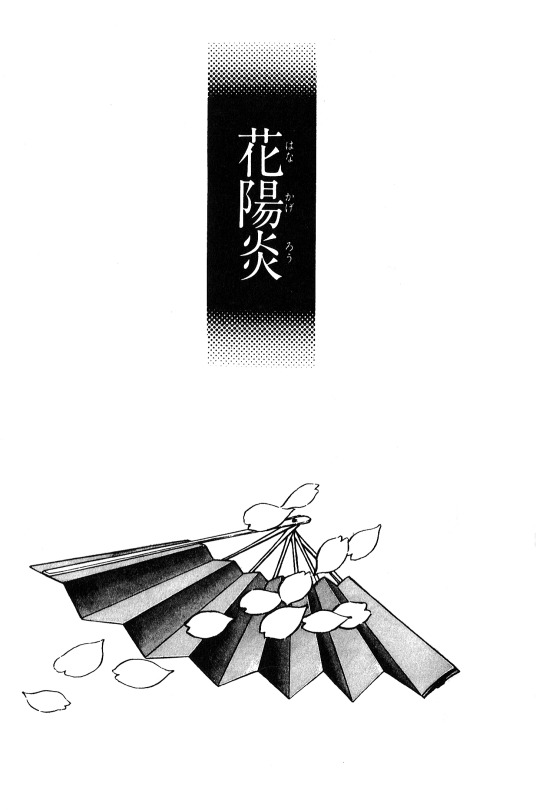
Adapted from Murasaki Shikibu's The Tale of Genji, and first published in Big Comic for Lady 1987/2.
This excerpt is taken from vol. 2 of Maki's Genji Monogatari adaptation, and depicts a scene that doesn't exist in the original work: Hikaru meeting Lady Fujitsubo for the first time. I must say that all that Genji Monogatari Japanese went over my head ;_;
4. Miuchi Suzue – Takekurabe (たけくらべ)
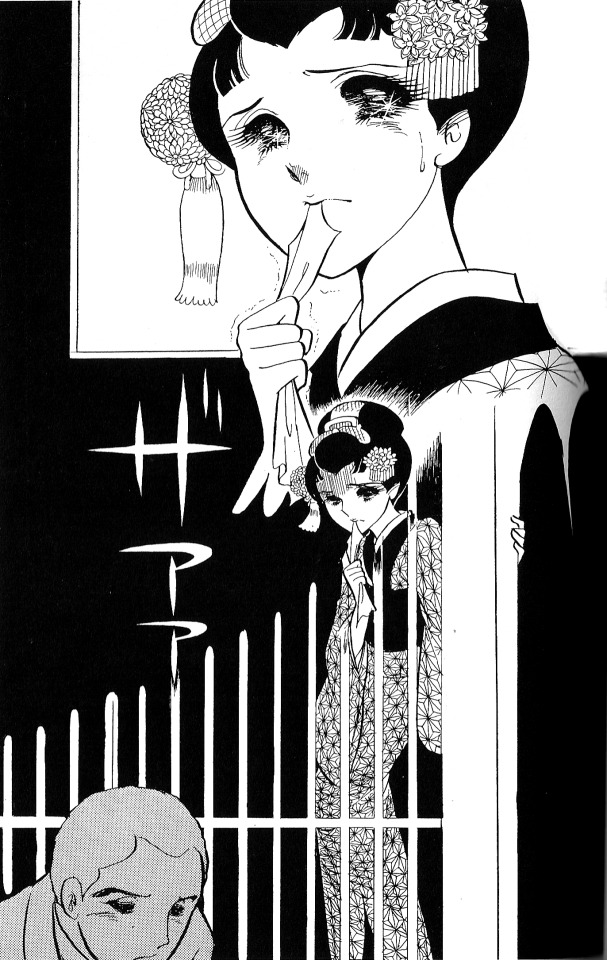
Adapted From Higuchi Ichiyou's Takekurabe, and first published in Hana to Yume 1977/1 & 2. This story is actually part of Miuchi's Glass Mask. In the manga, it was acted in the third act, “Kaze no Naka wo Iku.” Compiled in vol.s 3-4 Hana to Yume comics version, vol.s 2-3 of Hakusensha Bunko, and vol.s 3-4 of the digital ebook.
Conveying the subtleties of the character through the way Ayumi and Maya acts is quite ingenious. We get adaptation-ception with this one, and I loved it. It really made me want to read the book to get to know Midori better.
5. Sakata Keiko – Okisaki to Nemuri Hime (お妃と眠り姫)
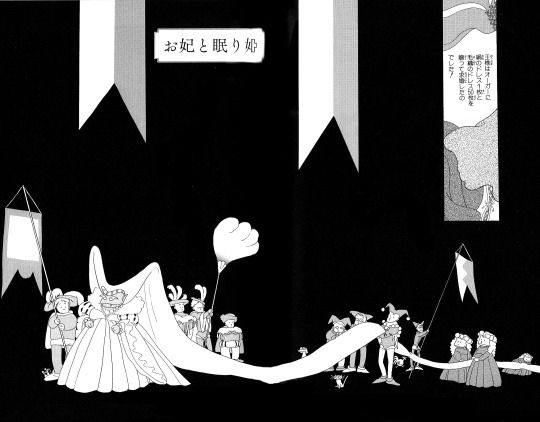
Adapted from Charles Perrault's Sleeping Beauty, and first published in Comic Tom 1989/1.
I haven't read Sakata's works, but she always strikes me as being the odd one in the shoujo scene. And this manga just strengthened my conviction. Her adaptation of Sleeping Beauty focuses on the ogre mother of the Prince, and her loneliness. Which is another ingenious way of going about adapting a fairy tale from a completely point of view. Her funny-looking art and humor adds to it.
6. Fumizuki Kyouko – Shiroki Mori no Chi ni (白き森の地に)
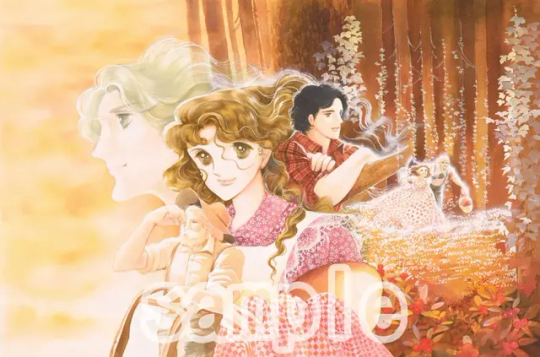
You get this color image I found online, because scanning this gorgeous double spread was impossible. And it's in grayscale in the book.
Adapted from Louis Hémon's Maria Chapdelaine, and first published in Bessatsu Shoujo Friend 1977/3.
I had no idea about this story, but wow, Hémon sure lived a life... This story that takes place in Canada feels really comforting. I'm surprised this didn't get an anime adaptation. Sure, it's not long enough for one, but it'd make a perfect comfort shoujo. "Comfort shoujo" as in people dying and the protagonist growing up after being hit by misery and having to make life-altering choices. I can see why this was popular in Japan.
7. Yamagishi Ryouko – Rapunzel Rapunzel (ラプンツェル・ラプンツェル)
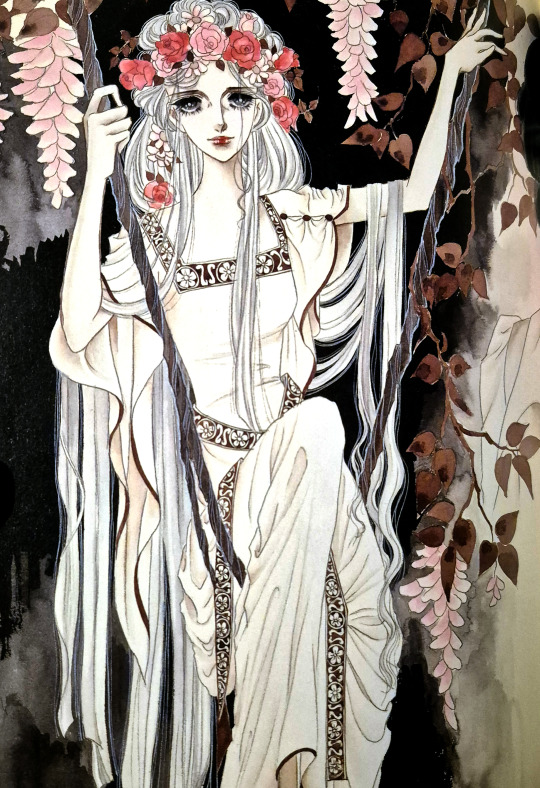
Feast your eyes on this color Rapunzel illustration from the Yamagishi artbook I have.
Adapted from Grimm Brothers's Rapunzel, and first published in Bessatsu Shoujo Friend 1974/6.
Queen Yamagishi does not disappoint: We go full psychological and read about how parents ruin childrens' lives by projecting their shortcomings in life onto them, and their twisted sense of "love" can be worse than a sorceress's curse. Prince charming therapy time, baby!
8. Sato Shio – Bijo to Yajuu (美女と野獣)
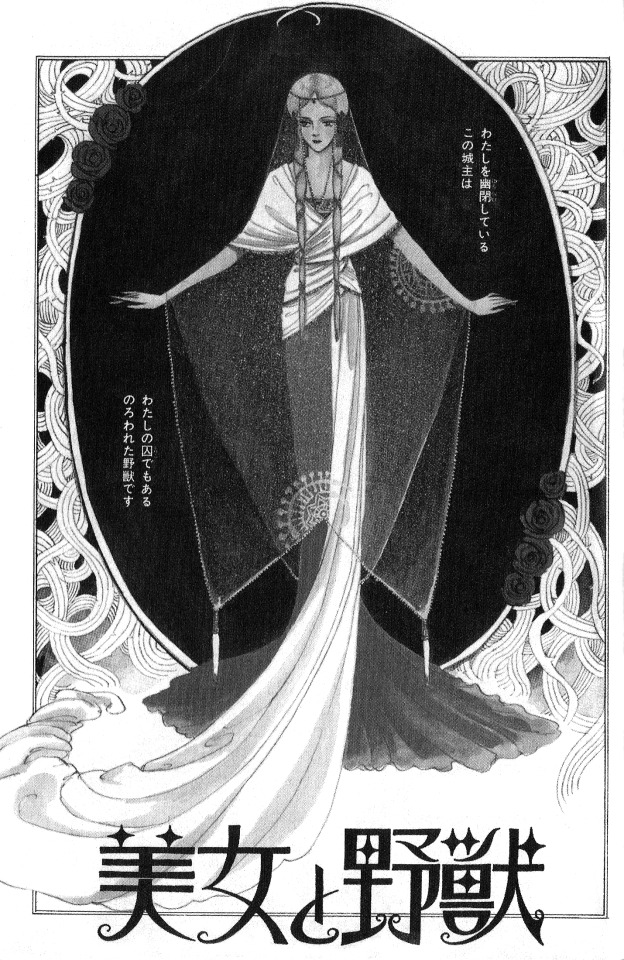
Adapted from Madame de Beumont's Beauty and the Beast, and first published in Papermoon Shoujo Manga Fantasy Shoujo Manga – 1001 Nights (5.11.1980).
This short yet poignant adaptation really brings out the love in the story. She distilled the tale, and left what touches your heart the most in these 8 pages.
This work was also originally published in full color, and it's so gorgeous that I bought the book it was first published in. I hope to have it within the month.
So yeah, if you need to gift something to your old-shoujo loving friend, you now know what to get :)
#萩尾望都#hagio moto#hans christian andersen#水野英子#mizuno hideko#cinderella#grimm brothers#牧美也子#genji monogatari#maki miyako#the tale of genji#美内すずえ#miuchi suzue#glass mask#glass no kamen#takekurabe#higuchi ichiyo#坂田靖子#sakata keiko#charles perrault#sleeping beauty#文月今日子#fumizuki kyouko#louis hémon#maria chapdelaine#山岸凉子#yamagishi ryouko#rapunzel#佐藤史生#sato shio
72 notes
·
View notes
Text
Theory time with Higuchi!
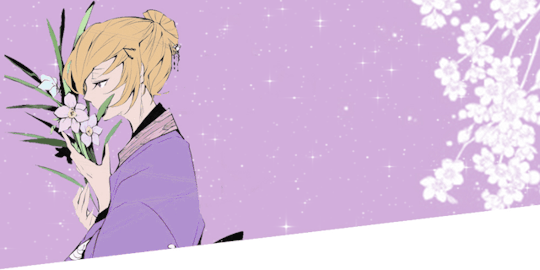
For anyone who wants a good read and some info on Ichiyo (Natsu) Higuchi this Reddit Post was really interesting
I first want to say I have zero evidence or reasoning behind most of this shit specifically the two abilities I’m pulling out of my ass (I do still love my Flowers at Dusk theory don’t get me wrong and a lot of the Growing Pains / Child’s Play theories are beautiful). Again these are for entertainment only I have no bets on these being real LOL
1. Draining / Absorbing
2. Her word is law
Now before I get into these (1,2) I want to bring up an interesting point seen in the Reddit Post I shared.
Specifically the Mori does not punish Higuchi part- and remembering the episodes in particular he really doesn’t. At most he is disappointed in her failure and asks if “she is suited for this job.”
Now this also made me realise (again the Reddit Post mentioned this too I found after reading further) the Command Unit is in direct line to Mori just after Executives.
Meaning she is high ranked overall in the Mafia not just amongst the Black Lizard.
She is Akutagawa’s equal - role wise in the mafia.
Why?
We know she is an ability user (not what the ability is) so is she simply well connected to Mori or is she a Secret Weapon? Or both.
Somehow she had to make it to Commander level even with the lack of respect she receives (until rescuing Akutagawa but even then they still don’t treat her like a leader).
I propose an option that also has no standing or reasoning.
She’s related to the previous boss.
Someone who didn’t have a choice to have anything but a mafioso lifestyle.
A granddaughter or a great niece etc. but let’s go with grandchild for this post- a favoured one at that- which I will get to.
Yes, this would technically mean she’s been in the mafia the longest compared to many characters (Dazai, Chuuya, Akutagawa etc).
I hear your “Wouldn’t Hirotsu know then?” It’s entirely possible if she is a favoured grandchild the Boss would have only wanted certain people to know about her when she was so young plus it’s not like every grandparent shares a last name with their grandchild (he could be her mother’s father).
It’s also possible if he knew the boss had a grandkid she would have been known as Natsu not Ichiyo at the time (since that is the authors real name).
And we all know I head-cannon that our girl is naturally brunette / raven haired so of course I'm adding in more plot with the name thing. Could be just for fun, maybe it was ordered, maybe it's so the people who did know about Natsu wouldn't point her out (Mori just hiding the nepotism).
In any case if this was how Mori knew her- after digging and of course killing him it’s entirely plausible that he’d 1. Look at it as an opportunity to fuck over the guy even when he’s dead 2. She’s a valuable asset because of it.
By that I mean her family name would hold power eg. she goes by Natsu (boss last name) when Mori needs something that only her family could get him.
Or she’s incredibly powerful and he’d be an idiot to not keep her. Perhaps she hates her power and he keeps that in check- she does what he says and then she doesn’t need to use it / she doesn’t have control - because less control over that means more control over her.
It’s not like she’d be his heir or anything (though that would be a funny fic idea- people trying to fight for the next in line and Mori is just like no I have a replacement it's Higuchi).
Anyway onto my not at all reasonable Ability theories.
1. Draining / Absorbing
This one was originally a "takes abilities" theory- which has absolutely no merit being a theory at all unless for whatever reason Asagiri decides that she and Dazai have been secretly related the whole time.
In the Reddit Post OP theorises that she could paralyse her opponents using her novella Takekurabe (Comparing Heights) with the English titles Growing Up and Child’s Play as the forefront. Though I’ve seen the use of the title Growing Pains instead of Up as well.
Using OP's word's, I don't think Higuchi will have a name-based ability (eg. Beast Beneath the Moonlight or Thou Shalt Not Die) and so for this crack theory I'm also using Growing Pains / Childs Play.
I suggest that she can drain or absorb abilities instead- leaving her opponents with a dull aching because a part of them is practically gone should she drain an ability to its dredges. She could probably kill someone if she wasn’t careful and took too much.
Think Rogue from X-Men.
That would make her a formidable enemy to have and an even better secret weapon.
It would also make her just another tool like Dazai was- instead of halting an ability she practically takes it away (which is plausible if we really dug into it, but this is more she takes the power or energy involved in using the ability).
Where did this idea even come from you ask?
Honestly no clue but I was trying really hard to figure out what possible ability she could have, and I have landed on it must be powerful and this would absolutely be an ability that she would hide until necessary. It would also be a play on the novella titles instead of simply going Child's play= dolls= voodoo doll ability for example (mostly because that's kind of Q's ability) but more a play on how for some people transitioning into adulthood is draining and not as fun as when the world was too big for us.
2. Her word is Law
Okay this is also a stretch just so we are clear BUT I think it's more plausible than draining / absorbing. I don't really know which title I'd give this one because I'm leaning again to a more a non-name-based ability (eg. No Longer Human or Plum Blossom in the Snow) so for the fun of it lets call this Flowers at Dusk (Yamizakura- yes, the one I usually use in Fics).
When I say her word is law I don't mean legally speaking- think Jessica / Paul Atreides or the Reverend Mother from Dune and how they use 'the voice'.
This ability came to mind since Ichiyo Higuchi is an important figure in Japan, though it wasn't like she would be able to sway politics or anything of the like. Her works are important, the words in the stories are significant. Key word, words.
This would be a valuable power worth keeping hidden and close to the chest, she would make her way up the ranks fast with such an ability and more than likely she'd be a great asset in regard to interrogations.
Mori would absolutely keep this ability a secret and keep her close because of it. Let's play into the idea that she hates or is afraid of her ability, a power that takes away others free will or control would be hard to deal with depending on your mental fortitude or upbringing.
If she said jump you would jump, if she said kill you would kill.
She'd be the perfect secret weapon with an ability like this especially if no one else knew and she got kidnapped- whoops they didn't put on ability suppressors ...oh hey where did she go?
I feel like this is a plausible option- only because we know nothing but that she is an ability user. It would make sense for her to be closer to Mori- he'd ensure she would never use the ability on him and considering people underestimate her already it would be an uppercut of a power to have and no one (but Dazai or those who are deaf I suppose) would be able to get away from it.
We'd really have to get into the meat of this ability and flesh out weaknesses par her voice box and No Longer Human. Is it the vibrations in her voice? Does she need a key word? Can she only use it on a certain number of people at a time? Could she pinpoint who isn't going to be affected if it were with a large group.
For example- The Black Lizard get cornered, and she needs to use her ability would her yelling STOP, MOVE BACK or FREEZE (any key words really) affect Gin, Hirotsu, Tachihara or Akutagawa?
Can you tell I like this idea for an ability lol.
Well, I think this post has been long enough. Let me know your thoughts as well, which one do you like better? Do you have any theories for what Higuchi's ability could be? Which book title do you think Asagiri will choose when we get to finally see what her ability is?
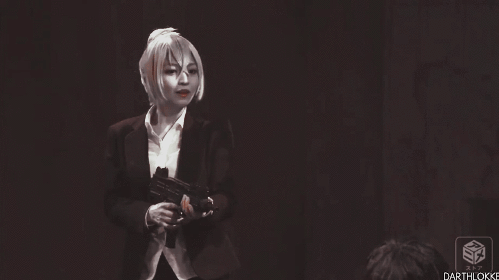
114 notes
·
View notes
Text
My earliest reading memory We had very few books at home, growing up, so I always looked forward to the Japanese textbooks that were handed out in school every term. I would read the entire book in one day, and over and over again after that. Textbooks might seem boring, but they gave me a way into contemporary poetry, haiku and tanka poems.
My favourite book growing up Demian by Hermann Hesse. Of all the protagonists, Sinclair appealed to me because of his introspective nature and lack of confidence.
It surprised me that I could understand the essence of my own culture through the work of Vonnegut, an American writer
The book that changed me as a teenager I was lucky to read Kurt Vonnegut as a teenager. Michael Ende has written about the way in which humour is not an expression of playfulness but rather an attitude of how a person deals with the extreme hardships and setbacks that occur in life. This understanding of humour is connected to the spirit of Osaka, the city where I was born and raised. It surprised me that I could understand the essence of my own culture through the work of Vonnegut, an American writer. Through his imagination and epic experiences, he taught me about hope amid despair.
The writer who changed my mind James Joyce. He completely transformed the way I thought about poetry – the whole concept of it, from form to content.
The book that made me want to be a writerI can’t think of one, because I never aspired to become a writer. I just gave my all to every job and got to where I am now.
The book I came back to Gravity and Grace by Simone Weil. As a non-believer, I could read and understand Weil’s work but never felt I could touch its essence. Now that I’m older and have been exposed to human limitations in various ways, the “God” that Weil refers to has taken on a new significance for me.
The book I reread Growing Up (Takekurabe) by Ichiyō Higuchi, who was one of the first professional female writers in modern Japan. She depicts, in superb prose, the brilliant innocence of children and the customs of the old part of Tokyo, from 130 years ago. Aside from being a pleasure to read, the story reminds me of how the economic disparity and systemic inequality of her time remain unchanged today. The Zürau Aphorisms by Franz Kafka is another one.
The book I could never read again I find many books are too macho to read now. Stories about “inheritance” or “succession”, depicting the conflict between sons and their oppressive fathers.
The book I discovered later in life A Manual for Cleaning Women by Lucia Berlin. This short-story collection was translated into Japanese a few years ago. I’m amazed by her ability to write about life’s sorrows and disappointments.
The book I am currently reading The Tale of Peter Rabbit and Other Stories by Beatrix Potter. I’m currently translating all 23 tales into Japanese, so I’ve been reading them very closely for the past two years. I am constantly impressed by their perfect structure – the illustrations are wonderful too. For example, the animals that eat well have shiny fur, whereas the less fortunate ones look greasy and flabby – their fur is painted differently according to class. There’s a lot I have learned from Potter’s life and her insightful vision.
My comfort read Kafka, because his works contain the truth that despair is neither something to be detested and shunned nor a sudden misfortune, but a natural condition for human life.
1 note
·
View note
Text
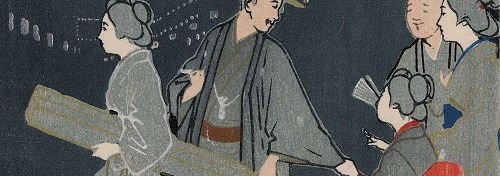
Hay un largo paseo hasta la entrada delantera del arrabal, donde las decaídas ramas de los sauces despiden a los juerguistas y las luces del burdel guiñan en el foso, negro como la laca que tiñe las sonrisas de las bellezas de Yoshiwara. Desde los cuartos del segundo piso de las altivas casas se derrama a los callejones la música y el jolgorio, casi tangibles. ¿Cómo prosperan tales negocios? El caso es que los calesines no paran de llegar día y noche.
Al vecindario detrás del arrabal lo llaman compás del templo Daion. Por muy pío que suene, sus vecinos le dirán que es un lugar muy descocado. Doblando la esquina del santuario de Mishima no se ven residencias señoriales, solo cuadras de diez o veinte casas con aleros vencidos hace mucho y postigos desvencijados que cierran a medias. Aquí no medra el comercio.
Ante las maltrechas casas todos se afanan recortando curiosas piezas de cartón, pintorreándolas de colores y espetándolas en unos extraños palitroques. Familias enteras por todo el barrio están entregadas a la confección de estas raras y abigarradas banderillas. Ponen a secar los recortes por la mañana y a la noche los montan. ¿Qué son estos cacharros en los que todos andan atareados? «¿No lo sabe usted? —exclamaría un comerciante atónito— ¡Rastrillos de la buena suerte! ¡Tendría que ver cómo se los llevan los señorones en el festival de Otori!»
Cada año sin falta, nada más bajar el ramo de pino de Año Nuevo del portal, todos los comerciantes que se precien se dedican al mismo negocio, y para el verano manos y pies están todos manchados de pintura. Cuentan con la ganancia para comprar ropa nueva para las fiestas. Si los dioses conceden la fortuna a los que compren estos amuletos, los que los confeccionan se imaginan que serán ellos quienes recojan el maná. Lo curioso es que por aquí nadie sabe de ningún vecino que se haya hecho rico.
Casi todos acá, de hecho, tienen algo que ver con el arrabal. Los hombres hacen chapuzas para las casas de menos categoría. Oigan a éste jugueteando con un manojo de tarjas de guardarropa antes de salir a la tarea, poniéndose el tabardo cuando los demás se lo quitan. Su mujer choca pedernales en la puerta para guardarlo de la mala fortuna. ¡Quién sabe si volverá mañana! Es un oficio peligroso. Inocentes circunstantes mueren en las reyertas de los burdeles. ¡Y cuídate mucho de frustrar el doble suicidio de una cortesana y su amante! Pero allá van los maridos cada noche a jugarse la vida, como si fueran colegiales que salen de merienda.
Las hijas de la casa también tienen quehacer con el barrio: aquí una es camarera en una de las grandes casas; allá, otra una trotona, trajinando como lanzadera entre el burdel y la casa de té. Van patullando linterna en ristre, anunciando a todos el nombre del establecimiento. Ahora su trabajo les parece de mucho rumbo y gala, como si actuaran sobre un noble tablado. Pero, a punto ya de acabar su aprendizaje, ¿qué les espera a todas estas chicas? Allá va una, cumplidos los treinta, muy peripuesta con su capa de algodón, vestido a juego y sus prudentes medias azul oscuro. No hace falta decir qué lleva en el atadillo bajo el brazo. Plon, plon, plon, hacen los tacones de sus zuecos —no tiene un minuto que perder— y la frágil pasarela se descuelga sobre el canal. «Aquí se lo dejo —dice poniendo en el suelo su fardo—, hay que dar una vuelta enorme hasta el frente.» Así que es costurera, al parecer.
Las costumbres aquí son muy particulares. No se encuentran muchas mujeres que se aten la faja pulcramente detrás. Una cosa es una mujer de cierta edad que se pirra por los estampados chabacanos o las fajas demasiado anchas, otra muy distinta ver a todas estas descaradas niñas de quince vistiendo las prendas más llamativas, chupando alquequenjes para evitar la preñez. Pero este barrio es así. Una furcia que ayer atendía bajo el nombre de no sé qué heroína del Romance de Genji en una casa de tercera junto al canal, se ha escapado con un hampón. Abren un figón, cuando ninguno tiene la menor idea de cómo llevar un negocio. Pronto se arruinan. La bella empieza a añorar su antiguo oficio. Sus activos fueron a la basura con los huesos del pollo servido anoche, pero la ninfa sí puede volver al nido. La gente por aquí encuentra atractivo el tipo, quién sabe por qué.
¿Cómo no va a influir tal atmósfera en los niños? Las mojigangas de otoño, por ejemplo. La madre de Mencio habría puesto el grito en el cielo si hubiera visto lo pronto que aprenden a imitar a los mimos famosos. ¡Vamos, que no hay uno que no sepa remedar a Rohachi o a Eiki! Oyen cómo los alaban y esa misma noche los despabilados golfillos andan tras sus pasos haciendo la ronda de las casas. Así empiezan con siete u ocho, ¡y para cuando tienen quince…! Miren a éste, que vuelve a la tarde de los baños con la toalla al hombro, graznando groseramente con la boca torcida la última coplilla. En la escuela la clase de música desemboca al primer descuido en las cadencias del barrio. Las tonadas de las geishas animan los encuentros deportivos, ¡sobran los hurras de la escuela! No se puede más que simpatizar con sus profesores de la Ikueisha aquí cerca. Será una escuelilla abarrotada —de hecho es particular—, pero hay hasta un millar de estudiantes y los profesores que triunfan aquí pronto son famosos. Aquí decir escuela es decir la Ikueisha.
Escúchenlos a la salida de clase: «Tu padre no pasa una en la casa de té junto al puente ¿no?», le gritan al hijo del bombero. La sabiduría de la calle; los niños están al tanto de lo que se cuece en el arrabal. Trepan por las cercas de los jardines, imitando a los bomberos: «¡Oye, que has quebrao los pinchos pa que no entren los ladrones!». El hijo de un tinterillo de poca monta inicia el hostigamiento: «Tu viejo es un mulo del burdel ése, ¿no? ¡Di!». El acusado se pone como un tomate. El pobrecillo moriría antes que reconocer que su padre cobra las facturas de cierto burdel. Y luego están los consentidos hijos de los peces gordos del arrabal, que crecen apartados del lugar, para poder pasar por bien nacidos. Lucen gorra de secundaria a la última con aire desenfadado y llevan la indumentaria europea con mucho caché. Divierte ver a los otros hacerles la pelota: «¡Señorito! ¡señorito!», llaman, cuando mejor dirían niñato malcriado.
Entre los muchos escolares de la Ikueisha está Nobuyuki del templo Ryūge. A su debido tiempo la tonsura segará su apretado pelo negro y endosará el hábito de sacerdote. Bien podría haberlo decidido él, pero también puede ser que se haya resignado a su suerte. Su padre era clérigo y, siguiendo sus pasos, Nobu es ya un erudito. Chico callado por naturaleza, sus compañeros lo consideran un muermo y se meten con él. «Mira, esto es lo tuyo: ¡un parroquiano! —gritan izando un gato muerto en un palo— ¡Adminístrale los últimos sacramentos!» Pero todo eso pasó, ya nadie se burla de él, ni por error. Tiene quince años, estatura media y el oscuro cabello cortado a cepillo al modo escolar; con todo tiene un aire que lo distingue de los demás. Aunque todavía lleva el ordinario nombre de Fujimoto Nobuyuki, ya hay algo en su porte que hace barruntar al eclesiástico.
Higuchi Ichiyō
#Higuchi Ichiyō#literatura japonesa#Yoshiwara#takekurabe#barrio#infancia#costumbrismo#traducción©ochoislas
3 notes
·
View notes
Photo

Anyway, I tried
14 notes
·
View notes
Text
“The day will come when I go walking with my pretty wife. I always like things to be pretty. If I had to marry someone like that pock-marked Ofuku at the cracker shop, or the girl at the firewood store with the bulging forehead—no thank you. I’d send her home. No pockmarks for me!”
“How good of you to come then,” the shop wife laughed. “Haven’t you noticed my spots?”
“Oh, but you’re old. I’m talking about brides. Once you’re old, it doesn’t matter.”
“I shouldn’t have said anything,” the woman sighed.
This exchange is so funny to me, but what’s even funnier is how she immediately turns it back on Shota and embarrasses the living daylights out of him:
“Well, let’s see now. There’s Oroku at the flower shop. She has a pretty face. And Kii at the fruit stand. And who else? Who else, I wonder? Why the prettiest one is sitting right next to you. Shota, who will it be? Oroku with those eyes of hers? Kii and her lovely voice? Tell us who.”
“What are you talking about? Oroku, Kii—what’s so good about them?” Shota’s face turned scarlet, and he backed away from the light, into a corner.
“Does that mean it’s Midori, then?”
“How do I know?” He looked away, tapping out a song against the wall. “The water wheel goes round and round.”
Midori and the rest had begun another game of marbles. Her face was not flushed in the slightest.
7 notes
·
View notes
Photo






NHK Eテレ「知恵泉」 〜樋口一葉の青春 “どん底”から抜け出すには?〜
#tv番組#知恵泉#NHK#Eテレ#樋口一葉#たけくらべ#美登里#信如#小説#明治時代#歴史#meiji#higuchi ichiyou#takekurabe#japanesestyleillustration#adobephotoshop#illustration#work#japan#color
18 notes
·
View notes
Photo

Press photo for Growing Up Twice (Takekurabe, たけくらべ), 1955, directed by Heinosuke Gosho (五所平之助) and starring Hibari Misora (美空ひばり)
118 notes
·
View notes
Text
bsd analysis: ichiyō higuchi
I’ve had this in my notes app drafts for a long time, but here it is. My analysis on Higuchi, who is, in my opinion, one of the most underrated characters in BSD. Note that I’m not the first person to do an analysis on her and I likely won’t be the last, so there may be things in here that others have already pointed out before. With that said, let’s get into it. No spoilers this time:
pattern of idolization

[ch 14: translated by easygoing scans]
Higuchi’s devotion to Akutagawa is one of her most defining traits. While BSD has several characters who idolize their peers to an unhealthy degree, Higuchi stands out in that a) we still don’t have an explanation for her feelings, and b) this idolization is not based on a connection between the real-life authors. Below, I’ll give examples of other characters who also share this kind of codependent relationship and explain how Higuchi differs from the pattern:
Akutagawa and Dazai
Akutagawa chases after Dazai’s approval because of the way Dazai abused him in the Mafia and subsequently abandoned him afterwards. In real life, their roles were reversed, with Dazai greatly looking up to Akutagawa and trying to win the Akutagawa prize.
Poe and Ranpo
Poe idolizes Ranpo’s intelligence and previously made it his goal to defeat him after Ranpo beat him in a game of deduction. In real life, Ranpo looked up to Poe as a mystery author and even modeled his pen name after Poe.
Nikolai and Fyodor
Nikolai considers Fyodor the only person who will ever understand his messed up psyche. In real life, Fyodor was inspired by Nikolai’s work and the two shared similar political views, although they never met.
The reason that Higuchi breaks this pattern is because a) her reasons for chasing after Akutagawa are unknown, and b) as far as I’m aware, the two authors had no connection in real life. Higuchi lived centuries before Akutagawa and while some famous authors did acknowledge her work (eg. Mori), Akutagawa was not one of them. (If someone ends up discovering a link between them, please let me know, since my Japanese is still not great so all the research I do is in English). Higuchi’s actions in the story show that her feelings for Akutagawa go far beyond simple infatuation: from staying in the Mafia just for him, to stalking him when she sees him with another girl.
relationship with Akutagawa
It’s worth looking at Akutagawa’s character to see what exactly Higuchi might idolize about him. Akutagawa is cruel and senselessly violent. While Higuchi is most likely desensitized from working in the Mafia, it’s been shown several times that she does not enjoy violence and only carries it out when necessary.

[ch 4: translated by easygoing scans]
However, though she might not enjoy Akutagawa’s excessive violence, it’s possible that she looks up to it as a form of strength. Higuchi has been shown to doubt her own strength and value within the Mafia. Meanwhile, Akutagawa is infamously known as the Rabid Dog. Not only does his violence earn him fear and respect, it‘a also what makes the Black Lizard respect Higuchi by extension. At least until chapter 14, where she proves herself by going in to rescue Akutagawa alone. But even after her subordinates learn to respect her, Higuchi still remains devoted to Akutagawa.
Higuchi also hasn’t shown attraction to anyone else in the story. Unlike Dazai, who is naturally flirty and has canonically had multiple failed relationships with women (L), the only time Higuchi ever shows attraction is towards Akutagawa. This makes it less likely that she acts this way towards all her love interests and this is simply a part of her personality.
her eyes
Harukawa once mentioned that they purposefully draw deranged characters with larger and darker pupils, while characters with a chance for redemption have more light in their eyes. Higuchi’s pupils in the manga are half light, half dark, making her one of the Mafia members with the lightest eyes. This could tie in with her wanting to leave the Mafia and goes to show that if not for Akutagawa, she could blend back into society and find a peaceful job with relative ease.
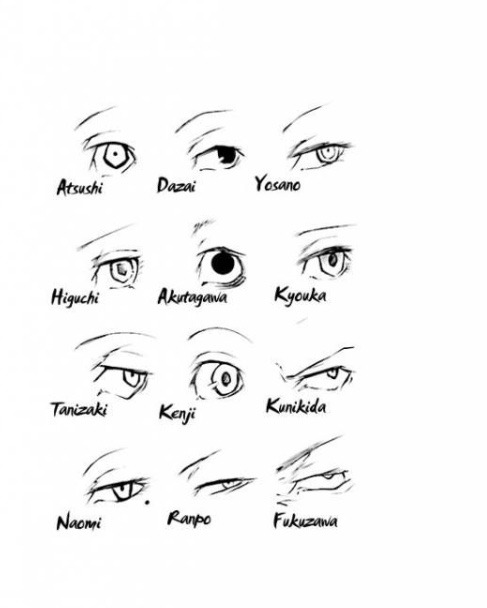
[uploaded by easygoing scans]
unknown ability
Higuchi is one of the few characters with an unknown ability. Back in 2018, Asagiri tweeted about not having decided on a name for her ability yet (look how many exclamation marks lol).

[translated by @Chibikko_Chuuya on Twitter]
In real life, Higuchi’s most well known work was called Takekurabe, which literally means “comparing heights” but is usually translated as Growing Up or Child’s Play. However, the fact that Asagiri struggled to decide on a name for her ability may suggest that it’s either unrelated to her literary work (eg. Oda’s Flawless) or derived from a combination of multiple works (eg. Poe’s Black Cat in the Rue Morgue). Shoutout to @/nikadoesanart for pointing out the second possibility on Discord over a year ago when we first discussed this.
parallels with Tachihara
My theory is that Higuchi’s development will be similar to Tachirara’s. Both started out as side characters with an unknown ability. However, in the DOA arc, Tachirara’s ability was revealed and he suddenly became very important to the plot. Along with his ability, his backstory and motives were also explored and he underwent a lot of development in a short amount of time. It’s very possible that this is what we’ll see with Higuchi as well. Once her ability is revealed, she’ll play a much larger role in the upcoming plot and much of her character—including the backstory of how she ended up in the Mafia and her reasons for being obsessed with Akutagawa—will be explained.
sources
Sources for the historical connections I mentioned between the real-life authors are a little all over the place, especially when it comes to the Japanese writers (doing research in English really is a limitation). However, I’ll do my best to compile them:
This post by @/bsd-bibliophile is honestly the best online source I found regarding Dazai and his relationship to Akutagawa. Much of it is a summary of the book Self Portraits: Tales from the life of Japan's Great Decadent Romantic.
There’s also an image scan here of the letter Dazai wrote to Haruo Satō, one of the judges for the Akutagawa Prize, the first time he failed to win the award.
Edogawa Ranpo naming himself after Edgar Allen Poe is probably literary trivia at this point and is mentioned below the information chart on his Wikipedia page.
Nikolai being a literary influence for Fyodor is explored in this 227 page-long PhD dissertation which I probably don’t recommend reading unless you have lots of time, but the section “The Role of Nikolai Gogol in Fyodor Dostoevsky’s Literary Mind” (pages 4-16) has a lot of information about the relationship between the two authors.
#atalina analyzes bsd#this turned into irl author facts at the end#also i read takekurabe for a class and liked it a lot#bsd#bungo stray dogs#bungou stray dogs#bsd analysis#bungo stray dogs analysis#higuchi ichiyo#dazai osamu#akutagawa ryuunosuke#ranpo edogawa#poe bsd#fyodor bsd#nikolai gogol
98 notes
·
View notes
Text
SPECIAL NOTICE: Takekurabe was adapted into a film in the 1950′s and into an animated short film in the series Animated Classics of Japanese Literature. If anyone should happen to find a reliable link for viewing, please reblog and include!
#I found out on Wikipedia but I haven’t been able to find a good link yet#also if I find any solid supplemental videos/articles I may post links here#jellicoe-lodge#takekurabe
1 note
·
View note
Text
me: ok im depressed, im gonna focus on studying
meiji lit: hello we are more depressed than you actually
#crying my eyes out because of takekurabe rn#it's like... the japanese 'beautiful'... what is this love triangle... these sad themes... why...
8 notes
·
View notes
Photo


Kiyokata Kaburagi “Midori, Heroine of [Takekurabe] by Ichiyō Higuchi” 1940
34 notes
·
View notes
Text
So almost all of us know that Bsd characters are based off of irl poets writers and playwrights and or books (ex:Naomi based and tanizakis book called Naomi) right? And that their ability’s are based on there books or are just based on the real life person. What if Higuchis ability is based off of one of the irl higuchis books, like
The Thirteenth Night, Nigorie, Takekurabe, On the Last Day of the Year, Yuko Kumo, In The Shade Of Spring Leaves, or Warkara
I hope Asagiri decides on what to make her ability soon because I really want to see it in the manga I feel as though it might have something to do with her guns because she is very skilled with them I can’t wait to see what her backstory on joining the pm is as well. Anyways I hope you enjoy this ramble of Higuchi she is a very underrated character and I want to see more of her in the future.
#bsd#higuchi ichiyo#higuchi x gin#bungo stray dogs manga#bungou stray dogs#bungo stray dogs akutagawa#bungo stray dogs gin
12 notes
·
View notes
Text

Hay un largo paseo hasta la entrada delantera del arrabal, donde las decaídas ramas de los sauces despiden a los juerguistas y las luces del burdel guiñan en el foso, negro como la laca que tiñe las sonrisas de las bellezas de Yoshiwara. Desde los cuartos del segundo piso de las altivas casas se derrama a los callejones la música y el jolgorio, casi tangibles. ¿Cómo prosperan tales negocios? El caso es que los calesines no paran de llegar día y noche.
Al vecindario detrás del arrabal lo llaman compás del templo Daion. Por muy pío que suene, sus vecinos le dirán que es un lugar muy descocado. Doblando la esquina del santuario de Mishima no se ven residencias señoriales, solo cuadras de diez o veinte casas con aleros vencidos hace mucho y postigos desvencijados que cierran a medias. Aquí no medra el comercio.
Ante las maltrechas casas todos se afanan recortando curiosas piezas de cartón, pintorreándolas de colores y espetándolas en unos extraños palitroques. Familias enteras por todo el barrio están entregadas a la confección de estas raras y abigarradas banderillas. Ponen a secar los recortes por la mañana y a la noche los montan. ¿Qué son estos cacharros en los que todos andan atareados? «¿No lo sabe usted? —exclamaría un comerciante atónito— ¡Rastrillos de la buena suerte! ¡Tendría que ver cómo se los llevan los señorones en el festival de Otori!»
Cada año sin falta, nada más bajar el ramo de pino de Año Nuevo del portal, todos los comerciantes que se precien se dedican al mismo negocio, y para el verano manos y pies están todos manchados de pintura. Cuentan con la ganancia para comprar ropa nueva para las fiestas. Si los dioses conceden la fortuna a los que compren estos amuletos, los que los confeccionan se imaginan que serán ellos quienes recojan el maná. Lo curioso es que por aquí nadie sabe de ningún vecino que se haya hecho rico.
Casi todos acá, de hecho, tienen algo que ver con el arrabal. Los hombres hacen chapuzas para las casas de menos categoría. Oigan a éste jugueteando con un manojo de tarjas de guardarropa antes de salir a la tarea, poniéndose el tabardo cuando los demás se lo quitan. Su mujer choca pedernales en la puerta para guardarlo de la mala fortuna. ¡Quién sabe si volverá mañana! Es un oficio peligroso. Inocentes circunstantes mueren en las reyertas de los burdeles. ¡Y cuídate mucho de frustrar el doble suicidio de una cortesana y su amante! Pero allá van los maridos cada noche a jugarse la vida, como si fueran colegiales que salen de merienda.
Las hijas de la casa también tienen quehacer con el barrio: aquí una es camarera en una de las grandes casas; allá, otra una trotona, trajinando como lanzadera entre el burdel y la casa de té. Van patullando linterna en ristre, anunciando a todos el nombre del establecimiento. Ahora su trabajo les parece de mucho rumbo y gala, como si actuaran sobre un noble tablado. Pero, a punto ya de acabar su aprendizaje, ¿qué les espera a todas estas chicas? Allá va una, cumplidos los treinta, muy peripuesta con su capa de algodón, vestido a juego y sus prudentes medias azul oscuro. No hace falta decir qué lleva en el atadillo bajo el brazo. Plon, plon, plon, hacen los tacones de sus zuecos —no tiene un minuto que perder— y la frágil pasarela se descuelga sobre el canal. «Aquí se lo dejo —dice poniendo en el suelo su fardo—, hay que dar una vuelta enorme hasta el frente.» Así que es costurera, al parecer.
Las costumbres aquí son muy particulares. No se encuentran muchas mujeres que se aten la faja pulcramente detrás. Una cosa es una mujer de cierta edad que se pirra por los estampados chabacanos o las fajas demasiado anchas, otra muy distinta ver a todas estas descaradas niñas de quince vistiendo las prendas más llamativas, chupando alquequenjes para evitar la preñez. Pero este barrio es así. Una furcia que ayer atendía bajo el nombre de no sé qué heroína del Romance de Genji en una casa de tercera junto al canal, se ha escapado con un hampón. Abren un figón, cuando ninguno tiene la menor idea de cómo llevar un negocio. Pronto se arruinan. La bella empieza a añorar su antiguo oficio. Sus activos fueron a la basura con los huesos del pollo servido anoche, pero la ninfa sí puede volver al nido. La gente por aquí encuentra atractivo el tipo, quién sabe por qué.
¿Cómo no va a influir tal atmósfera en los niños? Las mojigangas de otoño, por ejemplo. La madre de Mencio habría puesto el grito en el cielo si hubiera visto lo pronto que aprenden a imitar a los mimos famosos. ¡Vamos, que no hay uno que no sepa remedar a Rohachi o a Eiki! Oyen cómo los alaban y esa misma noche los despabilados golfillos andan tras sus pasos haciendo la ronda de las casas. Así empiezan con siete u ocho, ¡y para cuando tienen quince...! Miren a éste, que vuelve a la tarde de los baños con la toalla al hombro, graznando groseramente con la boca torcida la última coplilla. En la escuela la clase de música desemboca al primer descuido en las cadencias del barrio. Las tonadas de las geishas animan los encuentros deportivos, ¡sobran los hurras de la escuela! No se puede más que simpatizar con sus profesores de la Ikueisha aquí cerca. Será una escuelilla abarrotada —de hecho es particular—, pero hay hasta un millar de estudiantes y los profesores que triunfan aquí pronto son famosos. Aquí decir escuela es decir la Ikueisha.
Escúchenlos a la salida de clase: «Tu padre no pasa una en la casa de té junto al puente ¿no?», le gritan al hijo del bombero. La sabiduría de la calle; los niños están al tanto de lo que se cuece en el arrabal. Trepan por las cercas de los jardines, imitando a los bomberos: «¡Oye, que has quebrao los pinchos pa que no entren los ladrones!». El hijo de un tinterillo de poca monta inicia el hostigamiento: «Tu viejo es un mulo del burdel ése, ¿no? ¡Di!». El acusado se pone como un tomate. El pobrecillo moriría antes que reconocer que su padre cobra las facturas de cierto burdel. Y luego están los consentidos hijos de los peces gordos del arrabal, que crecen apartados del lugar, para poder pasar por bien nacidos. Lucen gorra de secundaria a la última con aire desenfadado y llevan la indumentaria europea con mucho caché. Divierte ver a los otros hacerles la pelota: «¡Señorito! ¡señorito!», llaman, cuando mejor dirían niñato malcriado.
Entre los muchos escolares de la Ikueisha está Nobuyuki del templo Ryūge. A su debido tiempo la tonsura segará su apretado pelo negro y endosará el hábito de sacerdote. Bien podría haberlo decidido él, pero también puede ser que se haya resignado a su suerte. Su padre era clérigo y, siguiendo sus pasos, Nobu es ya un erudito. Chico callado por naturaleza, sus compañeros lo consideran un muermo y se meten con él. «Mira, esto es lo tuyo: ¡un parroquiano! —gritan izando un gato muerto en un palo— ¡Adminístrale los últimos sacramentos!» Pero todo eso pasó, ya nadie se burla de él, ni por error. Tiene quince años, estatura media y el oscuro cabello cortado a cepillo al modo escolar; con todo tiene un aire que lo distingue de los demás. Aunque todavía lleva el ordinario nombre de Fujimoto Nobuyuki, ya hay algo en su porte que hace barruntar al eclesiástico.
Higuchi Ichiyō
4 notes
·
View notes
Photo
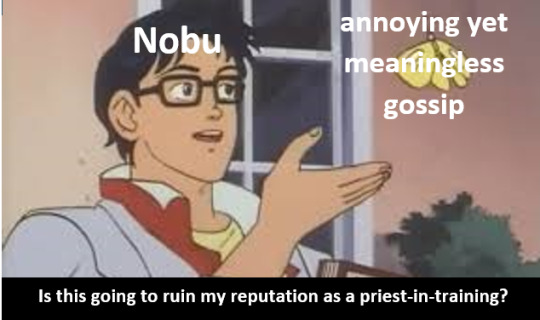
8 notes
·
View notes